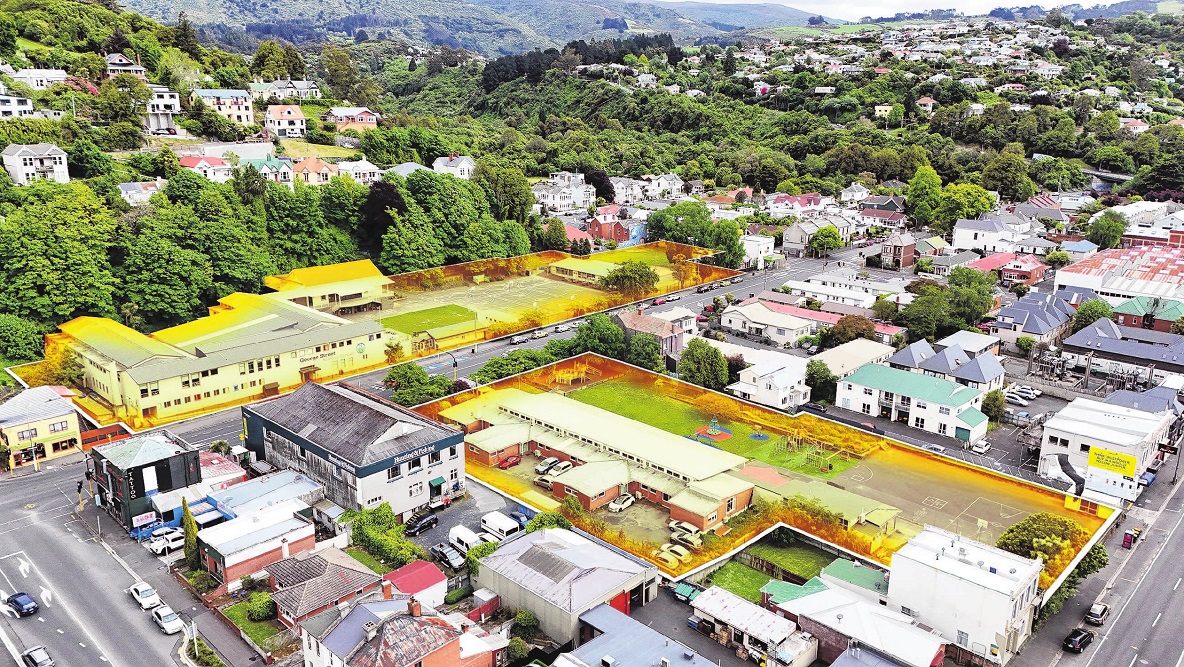
The proposed changes are expected to have a major impact on the North Dunedin school, so the board of trustees is holding a community meeting today, from 5.30pm to 6.30pm, to gather parents’ views to take back to the ministry.
Last week, the board sent a school-wide newsletter, stating the "North Models and Junior Blocks" were now past their "best-before dates", and the ministry had made the decision to demolish them.
However, the letter said building of the replacement classrooms would be funded based on the number of pupils living within the school zone.
Only 103 of the school’s 460 pupils were from within the school zone, meaning funding was limited.
‘‘The school has an enrolment zone which is very limited as it predominantly includes student accommodation, motels, Woodhaugh Gardens, the University of Otago, Logan Park fields, the University Oval and a lot of uninhabited land both up the valley and the Northern motorway.’’
The ministry has proposed to replace the nine demolished teaching spaces with just four.
The letter said the ministry had given the board the option to relinquish the junior site (on the east side of George St) and have all pupils housed on the main site (on the west side of George St), or keep the junior site and put the four new teaching spaces there.
But there would be no funding for a staff room, resource room or sick bay on the junior site.
The board said a staffroom on the junior site was needed for health and safety purposes, to ensure enough adults were on site during break times and ensure teacher wellbeing.
The board asked if the school could change its enrolment zone or apply to be a special character school, but the ministry said no.
The ministry said the school could remove its enrolment zone altogether, but it was not recommended because it meant the school would have to accept everyone who lived out of zone.
The board said the school already did that, unless a cohort was full.
The ministry was blunt on how to deal with the situation.
In communications with the board, it said: "You will need to reduce your roll".
"We think initially it needs to reduce to a maximum of 415, and then down to 350.
"You need to do this immediately.
"There is no ability to increase the number of teaching spaces; it is based on a formula generated by the number of in-zone students."
Based on its 2024 projections, the school would only be able to accept about 30-40 out-of-zone pupils next year, including 5-year-olds.
The board was concerned a reduced roll would "significantly change" the school’s culturally diverse character.
It was also concerned that if the whole school was merged to the main site, either with the existing roll or the proposed roll of 415/350, the play space would be extremely limited.
The ministry told the board there would be no justification for buying Willowbank Dairy to provide a greater space on the main side of the school.
School principal Robyn Wood did not respond to calls yesterday, and board chairwoman Holly Hammond declined to comment further because she wanted to keep "a good working relationship" with the ministry during the process.
Ministry south leader Nancy Bell said enrolment schemes were used to prevent the risk of overcrowding, provide a fair and transparent process for enrolments and to make sure the ministry is able to make best use of existing capacity within the school network.
"We are working with George Street Normal School on property solutions due to the condition of some of their existing buildings.
"When undertaking this work, we need to invest wisely and consider a range of factors.
"These include any population changes or growth projections, the school’s in-zone roll, and the capacity of other local schools in the schooling network to accommodate local students.
"This means that when property is redeveloped, it isn’t always a like-for-like solution."










